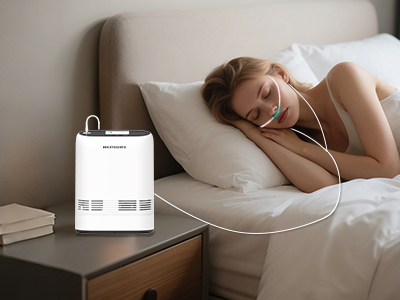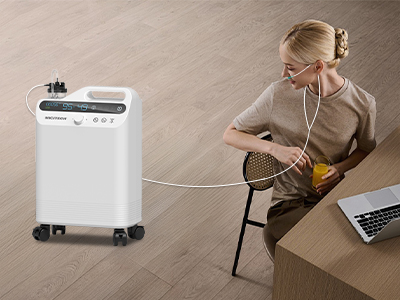14 Nov 2025
A night of peaceful slumber is a sacred thing. Yet for those who rely on oxygen therapy, the gentle hum of a concentrator can sometimes feel more like a disgruntled refrigerator than a soothing lullaby. Fortunately, portable oxygen concentrator are evolving into near-silent sleep companions—because oxygen therapy should support your dreams, not interrupt them.

Why Noise Level Matters During Sleep
Sleep is a delicate ritual. Even the slightest noise—like the infamous “drip… drip… drip” of a leaky faucet—can jolt a person into full midnight indignation. When oxygen therapy is part of your nightly routine, noise becomes more than just an annoyance; it can directly affect rest quality, stress levels, and next-day energy.
A noisy concentrator can trigger micro-awakenings, leaving you feeling as though you ran a marathon in your dreams. Quiet devices, on the other hand, promote restorative sleep by reducing auditory disruptions and fostering a more peaceful bedroom ambiance. Silence may not literally be golden, but at 2 a.m., it’s worth its weight in diamonds.
Features That Make a Portable Oxygen Concentrator Quiet
Modern manufacturers employ every trick in the acoustic engineering handbook. Internal sound-dampening chambers prevent the machine from rattling like a mischievous goblin. Advanced compressors operate with silky smooth movements, minimizing vibration. Precision airflow systems reduce turbulent whooshing.
Some units even utilize “whisper mode,” a delightful phrase indicating that the device is operating at decibel levels comparable to a well-behaved library. Sleek, sealed casings further cushion operational noise, creating an overall hush that allows you to drift off without feeling like you’re sharing a bedroom with a small, determined engine.
How Oxygen Flow Settings Influence Device Noise
More oxygen usually means more activity inside the machine. As the device increases its output, internal mechanisms must work harder, which can amplify operational noise. Pulse-dose delivery systems tend to be quieter because they provide oxygen only when the user inhales, reducing constant airflow sounds. Continuous flow models, while effective, may emit a more persistent hum—something that becomes noticeable in the stillness of nighttime.
Selecting the optimal flow setting can therefore make a significant difference. Sometimes, a slight adjustment—while staying within medically prescribed limits—can notably improve nighttime tranquility. A modest tweak can transform the soundscape from “gentle storm” to “peaceful meadow.”
Tips for Reducing Noise from Your Portable Concentrator
Even the most refined machine can benefit from a few well-placed strategies. Positioning the concentrator on a stable, soft surface can absorb vibration. Avoid placing it directly against a wall, where sound can echo like an overenthusiastic opera singer.
Some users place the device slightly farther from the bed—still within safe reach of tubing, of course—to create auditory distance. Others use white noise machines or low-volume fans to mask subtle mechanical murmurs. Regular cleaning and filter maintenance also prevent the device from straining, which makes it run quieter and last longer.

Sleep Accessories to Pair with Quiet POCs
A quiet concentrator is just part of the nocturnal equation. Soft nasal cannulas designed for nighttime comfort can reduce friction sounds against bedding. Tubing clips help prevent midnight tangles, which can sometimes sound like a snake pit if left unmanaged.
Weighted blankets, blackout curtains, and plush pillows enhance the sleep environment further. Aromatherapy diffusers—placed responsibly away from oxygen equipment—can soothe the senses with calming scents like lavender or chamomile. Combine these elements, and your bedroom transforms into a serene oxygen-supported sanctuary worthy of its own spa commercial.
Best Practices for Peaceful Overnight Oxygen Therapy
Consistency is a loyal ally. Establishing a pre-sleep routine ensures your concentrator is set up, charged, and functioning before you even think about sinking into your pillow. Check tubing for twists, confirm battery levels, and make sure the device is positioned for minimal noise transmission.
Encouraging good sleep hygiene—like limiting screens before bed, keeping the room cool, and maintaining a predictable bedtime—works synergistically with quiet oxygen therapy. When both your environment and your equipment cooperate, your body can slip into the deep, delicious rest it deserves.
Keywords: Oxygen Concentrators
Originally published 14 Nov 2025, updated 14 Nov 2025.